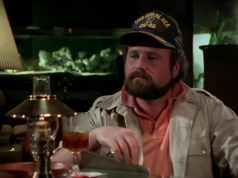I spent a childhood devouring almost everything Stephen King wrote. My enthusiasm was greatly helped, of course, when he sent me two autographed postcards almost thirty years ago saying thanks for the fan mail. As an adult, I still haven’t gotten around to reading either of his author sons, Joe Hill and Owen King. While searching for new titles suitable for October reading, I flipped through a copy of Hill’s “Heart Shaped Box” at a bookstore, and quickly decided that vengeful demonic rock stars weren’t really my trick or treat bag.
During this nicely gloomy Halloween month, I’ve decided to revisit three authors that King’s non-fiction writing introduced me to many years ago: H.P. Lovecraft, Joyce Carol Oates, and Richard Matheson. A few years back, Peter Straub edited a Library of America edition called “H.P. Lovecraft: Tales.” The seriously screwed up Lovecraft (1890-1937) is even more fun to read than I remembered: he combined his amateur studies of Darwinian evolution, geology, and astronomy with a pathological paranoia about “miscegenation” (i.e. interracial relationships) to create stories about decaying Northeastern towns full of crazed half-human creatures working to call up The Old Ones. Those are prehistoric gods led by the supremely malevolent, tentacle-faced Cthulhu. (My all-time favorite bumpersticker: “Elect Cthulhu. Why Vote for the Lesser of Two Evils?”). Lovecraft’s work is equal parts ridiculous, feverish, and skin-crawling.
The ultra-prolific Joyce Carol Oates needs no intro, of course, so check out her 2004 short story collection “I Am No One You Know.” She’s a distaff King with graceful sentences and a greater stamina: She’s still turning out powerful stories five decades after she published her first, including “I’m Not Your Son, I Am No One You Know” (a grotesque and disorienting account of a visit by adult children to a nursing home), “The Girl with the Blackened Eye” (a deft but stomach-churning monologue by a kidnap victim who develops sympathy for a serial killer), and “Happiness” (about two sisters with divergent memories of an axe-murder crime scene). Oates isn’t “horror fiction,” but she can be horrifying in her descriptive details and is always psychologically attuned to her maladapted characters.
Finally, I picked up the Richard Matheson collection “Nightmare at 20,000 Feet.” Matheson has been publishing novels and stories for six decades, and wrote the novel on which the Will Smith movie “I Am Legend” was based. He also wrote the nifty early-Spielberg TV flick “Duel”; the “Twilight Zone” episode where passenger William Shatner faces off with an irate teletubby on the wing of a jet airliner; and “Prey,” that inimitable TV short in which Karen Black gets chased around her apartment by an African fetish doll. The stories in “Nightmare at 20,000 Feet” beautifully illustrate how a writer’s warped sense of humor can shift into overdrive and create a scarily anarchic universe. In Matheson’s mind anything can be turned into a rampaging monster, including tween girls (“Witch War”), a TV set (“Through Channels”), and the energy from one man’s out of control temper (“Mad House”).











